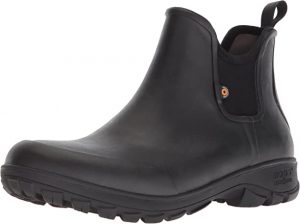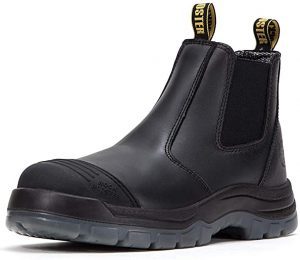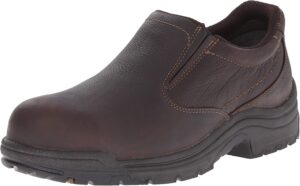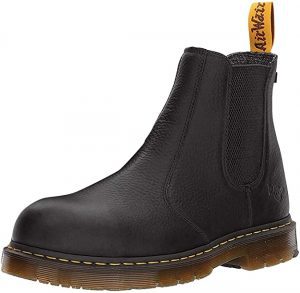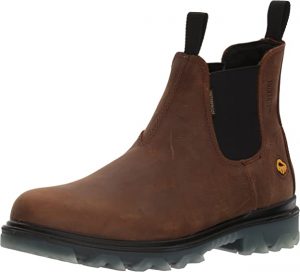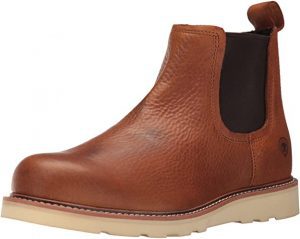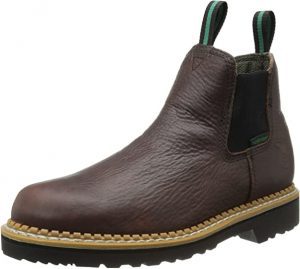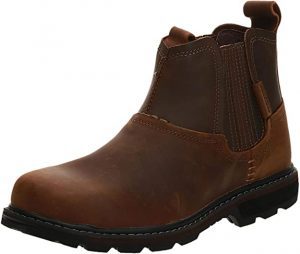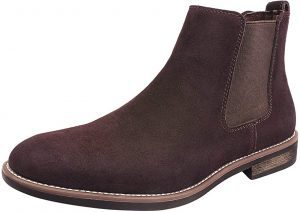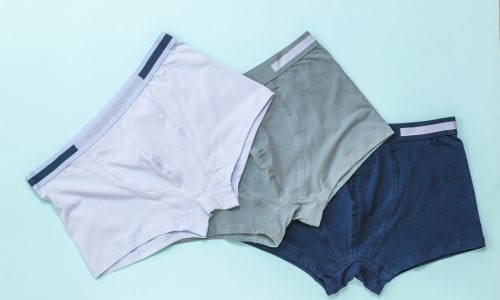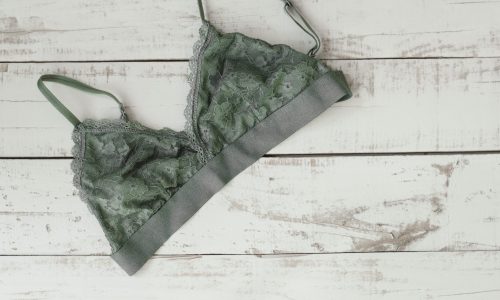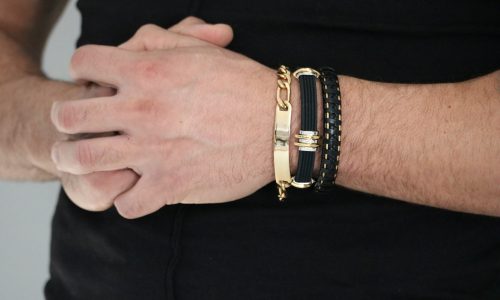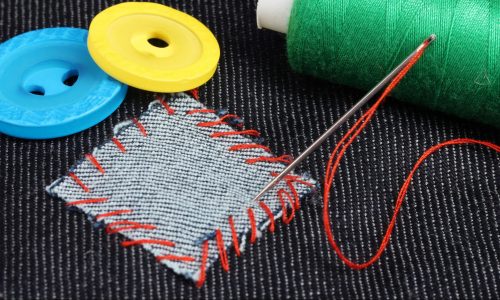The Best Men’s Slip-On Boots

Our Review Process
Don't Waste Your Money is focused on helping you make the best purchasing decision. Our team of experts spends hundreds of hours analyzing, testing, and researching products so you don't have to. Learn more.
Our Picks For The Top Men's Slip-On Boots
- 1. BOGS Synthetic Rubber Soled Men’s Slip-On Boots
- 2. ROCKROOSTER Steel Toecap Slip-Resistant Men’s Slip-On Boots
- 3. Timberland Waterproof Leather Men’s Slip-On Boots
- 4. Dr. Martens Steel Toe Moisture Wicking Men’s Slip-On Boots
- 5. WOLVERINE Leather Moisture Wicking Men’s Slip-On Boots
- 6. Ariat Rambler Recon Slip & Oil Resistant Men’s Slip-On Boots
- 7. Georgia Boot High Romeo Waterproof Men’s Slip-On Boots
- 8. Skechers Blaine Orsen Dual Pull-On Leather Tabs Men’s Slip-On Boots
- 9. Bruno Marc EVA Foam Footbed Suede Men’s Slip-On Boots
Not only do these men's slip-on boots have a slip-resistant rubber sole, but they're also outfitted with Neo-Tech waterproof insulation. That means you can wear them in all weather conditions. Men will especially appreciate that the boots are designed with rebound cushioning for comfort and offer odor resistance.
Economical PickWhen shopping on a budget, these affordable men's slip-on boots are the way to go.
These men's slip-on boots have the right stuff for work, but the insoles will make you want to wear them all day. The fit is snug, yet it allows room for the toes to breathe, and the material keeps everything ventilated. Little to no break-in time means you can put them to work right out of the box.
Comfortable Yet ToughThe insoles provide the softness while the exterior handles the hard stuff.
Although these men's slip-on boots are designed for use at work, they are stylish enough to double as dress shoes. The boots are constructed using a durable leather and have a convenient waterproof coating for days when the weather turns sour.
Most VersatileThese brown men's slip-on boots have excellent traction outside and an antimicrobial lining for odor prevention inside.
The feel of full-grain leather is evident from the moment you pull these on. Break-in time is short, and the soles can grip on the slipperiest surfaces. Through it all, the insoles keep feet secure and comfy.
Quality LeatherThese classic men's slip-on boots break in quickly and feel great.
Buying Guide
There are few types of footwear that combine function and fashion like a good set of boots. Whether you’re working on a construction site or an office pitch, heading out on the trail or on the town, there’s a boot out there that fits the moment perfectly. Slip-on boots add another layer of versatility: All the protection and fashion with drastically less time spent putting them on.
Also known as pull-up boots, this type of boot can come in many sizes and styles. The main feature is the shaft, or top of the boot, which has elastic or mesh sides that allow the foot to slide right in. Unless they’re on for cosmetic purposes, you won’t find any laces here.
While that stretchy part is what makes it a slip-on boot, the rest of the material is far more important in terms of quality. And while you can find cheaper footwear made out of a variety of synthetics, leather is and always has been the gold standard for any shoe you plan to work in. It’s naturally water resistant, durable, looks great and feels comfortable once you’ve broken in the boot.
Of course, not all leather boots are created equal. There’s a dizzying array of grades for leather, but it helps to know the most popular ones. Full-grain leather is widely considered the top of the line, giving wearers a boot that can last for years and that only looks better and more authentic over time (provided you administer the occasional polishing). Top-grain (or split-grain) leather is a more common type, not quite as distinctive or hardy but still a great choice as long as the stitching and general construction of the boot is up to snuff. Suede boots are instantly recognizable for their baby-soft texture, and while they’re best suited to dress boots they can be quite durable with the proper care. “Genuine” leather, ironically enough, is a designation that should raise a red flag if you’re paying top dollar. While it may sound artisanal, genuine leather products are cobbled together from scraps on the lower layers of the hide.
Now that you’ve got the look you want, it’s time to consider the fit. This is a little more crucial with slip-on boots. Looser boots in a more traditional style can always be tightened up with the laces. There’s no such option with slip-ons, so make sure they’re near that sweet spot straight out of the box — not too loose, not too tight.
From there, there’s another range of factors to consider based on where you plan on wearing your boots the most. Heavy construction boots are going to need steel protection around the toes, and durable materials. (As long as they fit well enough, pull-on boots can actually be safer than many other types of boot since there are no laces to trip over.) Hiking boots will need good support and an impeccable fit, while dress boots will need to look good with a range of outfits.
What to Look For
- It bears repeating that a first impression is crucial when you’re buying slip-on boots. Literally and figuratively, you don’t have a lot of wiggle room when it comes to fit since there are no laces for you to tighten.
- Most shoe experts agree that you should have about a half-inch of space left in the toe of the boot, measured from the end of your longest digit. If things are feeling too cramped around the balls of your feet, consider returning the boots. Yes, there’s a “breaking-in” period with many leather boots, but they generally won’t widen more than a millimeter or two. A tiny bit of slippage is OK, but you should never feel squeezed.
- Mind you, all is not lost if your foot is an irregular size. If things are a bit too loose, insoles can help fill the space. And if there’s slippage or your ankles chafe slightly on the sides, liner socks can be a lifesaver until the boots are broken in.
More to Explore
As you might expect, it didn’t take long for slip-on boots to become popular once they were introduced around the early 1800s. While boots with elastic sides first appeared in and around the court of Queen Victoria, they soon came to be known as Congress boots or gaiters in the United States.

